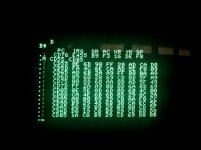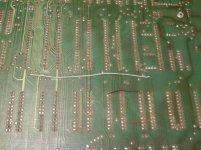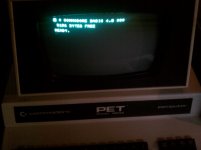dave_m
Veteran Member
EDIT: Oh, for crying out loud, yes. If I hold a jumper between pin 37 and 38 of C7 the PET still drops to the debugger, but I have a blinking cursor and partial keyboard input. (Some keys don't seem to be responsive, but they could be dirty or there could be a bad connection or... whatever. Time to pull the board and jumper *another* break. Maybe the socket is bad?)
Yes, the 60 Hz timer interrupt comes from C7 pin 37. The PIA is initialized by the processor to cause an interrupt every time the Video On signal pulses at the PIA CB1 input (pin 18 ).
Is there a socket at the C7 PIA? If so, it may have been soldered there with too much heat by a repair person. I wonder how many more bad connections you will find.
Are there any tell tale signs of bad workmanship that can give you clues as to where other bad connection may be? Look for brown spots on the board, etc.



